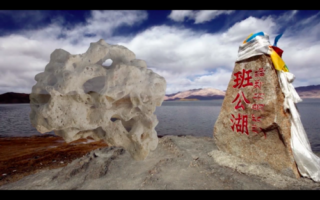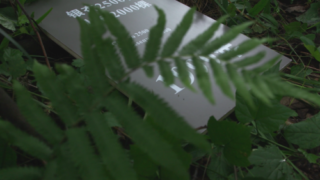
Habitat, Geology and Energy Basis 2021
video, 15’ 05’’
Courtesy of the artists

Observing Point 2019
video, 17’ 30’’
Courtesy of the artists
Cao Minghao and Chen Jianjun’s work focuses on the complex relations between governmental land administration policies and their effects on local communities in China. In collaboration with local residents, NGOs, and other researchers, their work sheds light on official political narratives and personal histories, to present a critical reading of how in the eyes of the authorities, peoples and territories are assets to be managed. Observing Point is part of Water System Project, a multi-year research process in the province of Sichuan that focuses on the Minjiang River and the Dujiangyan, a system for water management developed in 256 BC. For this work, the artists collaborated with Wang Yizhong, a farmer responding to the heavy deforestation of the land surrounding his home in Shuitianping village, who began planting trees more than twenty years ago. He introduced hundreds of saplings into the local landscape while educating his family and neighbors on reforestation as a methodology for the safeguarding of the surrounding ecology. Habitat, Geology, and Energy Basis surveys the geological and seismic conditions of an area of China in Hengduan Mountains on the Tibet plateau, which is in the upper reaches of the Minjiang River. While presenting a quantitative analysis of the minerals and metals in the area, the landscape and the stones displayed as monoliths insinuate a mystical vision. Some stones witness subterranean secrets and some have specific gravity among the mineral material, emphasizing the important role of geological energy in contributing to the human social and historic infrastructure of this region defined as ‘ecologically sensitive area’.
Artists’ statement
The focus on healing and recovery comes from the question we ask ourselves: how do we understand disasters? In the context of governance in China, concepts such as ‘asylum’ and ‘reconstruction’ unfold with the single logic of a predetermined ‘disaster’, and that makes it impossible to grasp the ecological reality of the present. For the Qiang people who live near the Minjiang River Basin, life is much more complex than that single logic. The rapid and ‘efficient’ post-disaster reconstruction unsettles local people’s reconnection to traditional knowledge and subsistence in a profound but invisible way. We need to rethink what is the relationship of indigenous residents to disaster, nature, plants, and animals? How can their wisdom still be involved in today’s crisis? Thus, only a critical reconceptualization of healing or reconstruction is possible for the kind of crucial work that is ongoing, timely, and interdisciplinary.